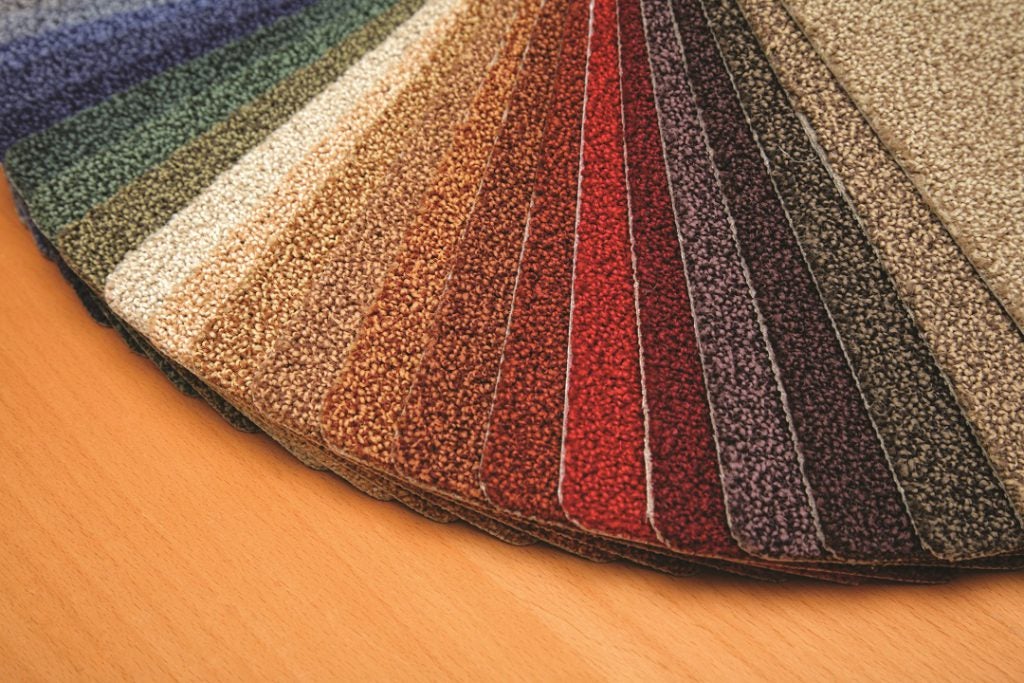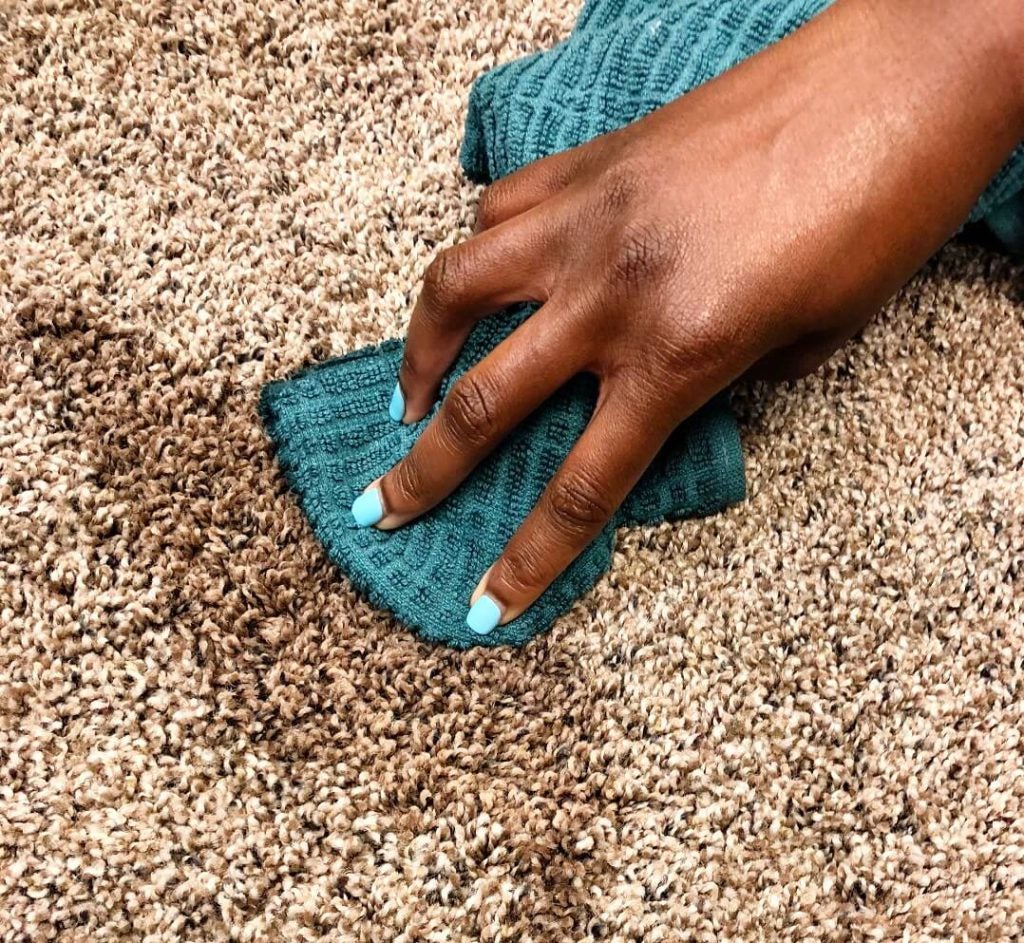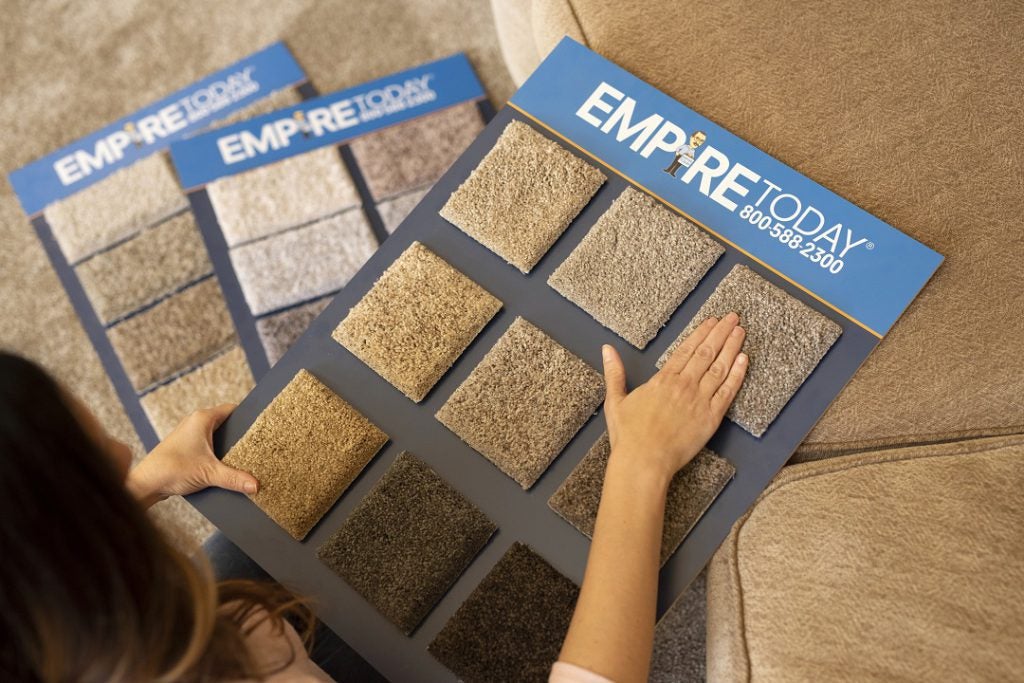When researching new flooring products for a potential home renovation, there’s a good chance you’ll be faced with an overwhelming amount of technical information. Much of it will be broken down in terms that anyone can easily understand, but on occasion, you’ll encounter industry jargon with no clear explanation as to what it means or what its pros and cons are. If you’re shopping for new carpet, you’ll likely see mentions of the way a particular carpet’s fibers are dyed. They’ll typically be referred to as being either solution-dyed or piece-dyed fibers.
So, what exactly do these terms mean and when it comes to selecting a carpet, is there any real difference between solution dyeing and piece dyeing? Is one form of dyeing better than the other? Well, each has its pros and cons, and deciding which is a better choice will depend on what traits are most important in your new floors. In this article, we’ll take a closer look at solution-dyed vs piece-dyed carpets in a way that will help you make the most informed choice.
The Basics of Carpet Fiber Construction and Dyeing

Before we get to the dyeing differences, it helps to have a basic idea of how carpet is created. Most modern carpets are typically made from one of three different synthetic fiber materials: nylon, polyester, or olefin (some high-end carpets are also made from wool, but they are rarer, and these dyeing methods don’t both apply). Each of these types of carpet is made by melting pellets of the raw material, and then, via a process known as extrusion, squeezing it through tiny holes in a machine called a spinneret to create a fine fiber. Remember making Play-Doh spaghetti? It’s essentially the same process.
In their raw forms, each of these carpet fibers is usually translucent or has a dull, off-white appearance. So, regardless of the fiber type, every carpet needs to have color added in order for manufacturers to be able to offer a full range of carpet hues to their customers. Without dyeing, all carpeting would be drab and colorless. And while the totally natural look might be sought after on some occasions, people overwhelmingly choose shades with more personality when redecorating their home—especially as the current carpet trends point towards a return to more intense colors and patterns.
Whether a subdued gray, a bold merlot, or anything in between, all carpet gets its color via dyeing. This dyeing process is done through one of the two methods mentioned in the article opening: solution-dyeing or piece-dyeing (sometimes referred to as yarn dyeing). Though they both achieve the same end goal—giving your carpet its distinct color—the methods differ, and each has its pros and cons.
Technical Differences Between Solution Dyeing and Piece Dyeing
With solution dyeing, the carpet coloring is added during the extrusion process—after the raw material has been melted but before it has been transformed into the carpet fibers. If the carpet material was a cake dough, the color would be added during the kneading process. Adding the dye at this time creates a solution—the dye and the raw material get completely mixed and turn into an inseparable compound. As a result, the carpet is colored through and through. If you were to cut a fiber in half, the entire cross-section would have a consistent color.
With piece-dyeing, the color is added after the raw material has been extruded into fiber. The finished fibers are dunked into a vat of dye to take on their final color. It’s the same concept as dyeing an Easter egg or painting a house. Or, to continue the cake analogy, it’s like applying a colored frosting to a baked cake.
The Benefits of Each Type of Carpet Fiber Dyeing
So what’s the difference between these methods of dyeing carpet fiber, and why should you care? The main and most important difference is the permanence and resilience of the resultant color.
Let’s go back to the cake analogy. Say you’re starting with a white cake mix—this is our raw carpet material. During the mixing process, you decide to add some cocoa to the dough. After completely mixing the ingredients, kneading the dough, and baking it, you will have a chocolate cake. Cut a slice of it, and every bit of the cake will be chocolate, from the entire outer surface to the very middle. It’s essentially impossible to remove the chocolate from the cake once it’s been baked in. This is solution dyeing.
Solution-dyed carpets are prized for their incredible resistance to fading and staining. There is no risk of the fiber color being dulled by strong cleaning agents, which makes it much easier to remove heavy stains. Even if the fibers wear or break over time, the color of the carpet is highly unlikely to change.

Alternatively, you can proceed with your cake as the original recipe suggests. You’ll end up with a beautifully bright, stark white cake. At that point, you decide you want to frost it in chocolate. After whipping up a batch of decadent cocoa frosting, you expertly cover the entire cake in it. Now, when you cut a slice of it, the entire inside will still be white. But on its surface, it’s the most rich-looking cocoa creation ever to come out of your kitchen. This is piece dyeing.
Piece dyeing’s greatest benefit is that it greatly increases the range and intensity of available color options. If you’ve got your eye on a vibrant blue plush carpet, it’s likely a piece-dyed product. Any baker knows that it’s much easier to get bold colors through a layer of frosting than it is to try to dye the entire batch of dough. Piece-dyeing also allows for selective coloring, giving manufacturer’s the flexibility to add design elements or flecks of color after the carpet has been woven.
And the Downsides of Each Dyeing Method
As hinted at above, the main downside to solution-dyed carpet is the limited range and vibrance of possible fiber colors. Solution dyeing can create rich earth tones and reliable neutral shades but falls short when it comes to bolder modern colors like vibrant blues, greens, and reds. To get the desired richness with those shades, manufacturers will almost always turn to piece dyeing.
And the greatest disadvantage to piece-dyed carpet is that those bold colors are more likely to fade or be damaged by wear and harsh cleaners because the dye only exists on the surface of the fiber. Like paint on your car or the frosting on that cake, a deep enough scratch will reveal the bare material underneath.
Is Solution-Dyed or Piece-Dyed Carpet a Better Choice for My Home?
There are very few absolutes in the world of home renovation or redesign, and that extends to your carpet choice. While many flooring professionals will tell you that solution-dyed carpet is always the better option, there will always be variables to consider. It’s true that you should probably look for a solution-dyed carpet for high-traffic homes or if you expect to regularly be scrubbing stains out of your carpet. A carpet whose colors will never fade will be invaluable in these settings. And if you’re specifically interested in more subdued shades anyway, you won’t miss out on anything.

On the other hand, if you make your choice knowing the potential quirks, piece-dyed carpets can be the right choice for your home. After all, there is nothing inherently wrong with piece-dyed carpets; they just aren’t quite as colorfast as solution-dyed options. And they’re still washable, you just have to take some extra precautions with the type of cleaner you use and how intensely you scrub. Plus, with how advanced today’s stain-resistant carpets are, regardless of dye type, the average homeowner doesn’t need to do much deep cleaning. But if you live in a home that doesn’t see tons of traffic or accidental spills, and bold flooring is key to your design scheme, then piece-dyed carpets will likely serve you well—and for many years.
Still need some help deciding on what type of carpet would be best for your home? Give us a call or click on any of the “Schedule In-Home Appointment” buttons on our site to set up a consultation with a carpet professional who will not only guide you through the entire decision-making process, but will do it with a full range of samples for you to see and feel—all in the comfort of your own home.
Get the latest updates delivered to your inbox.